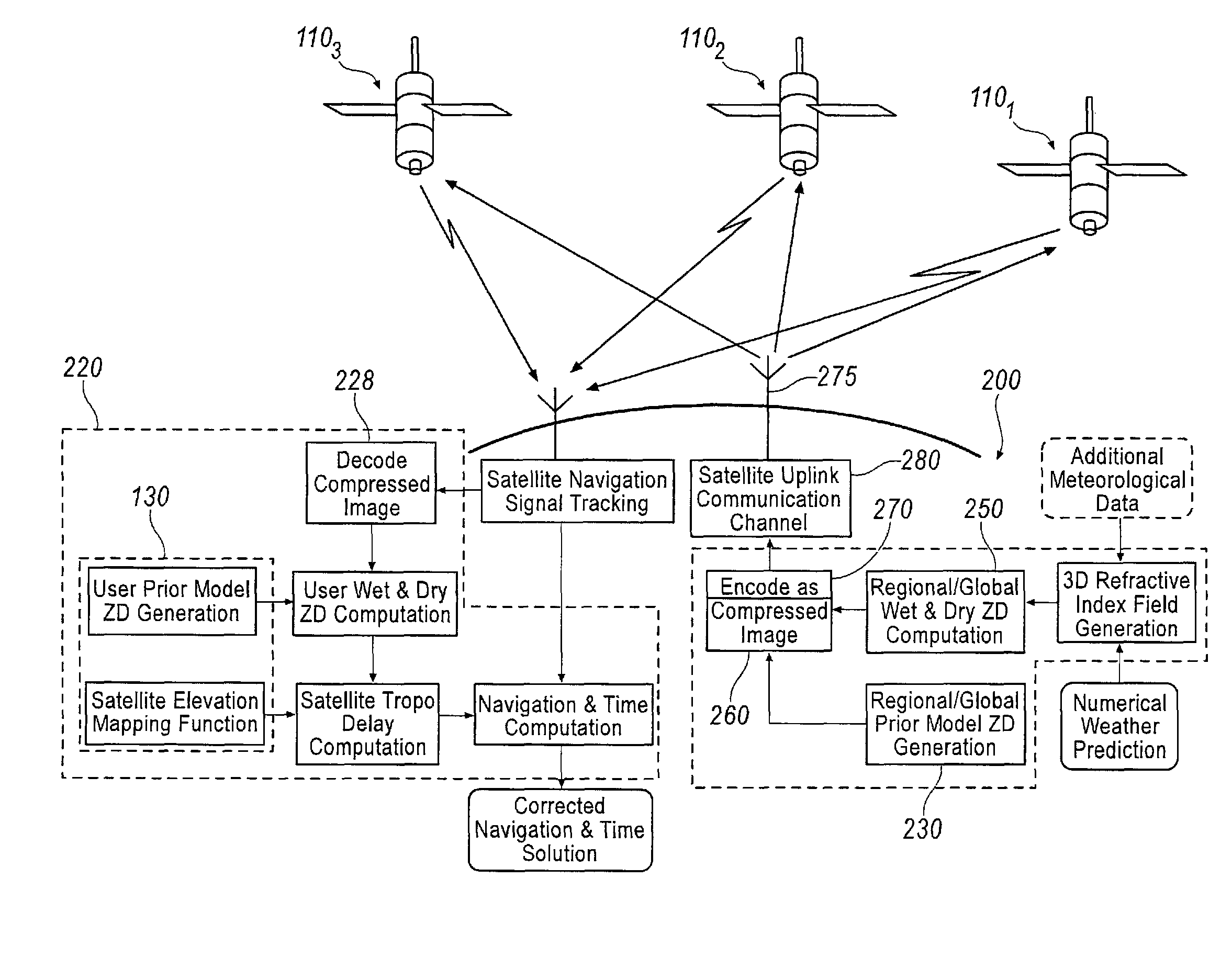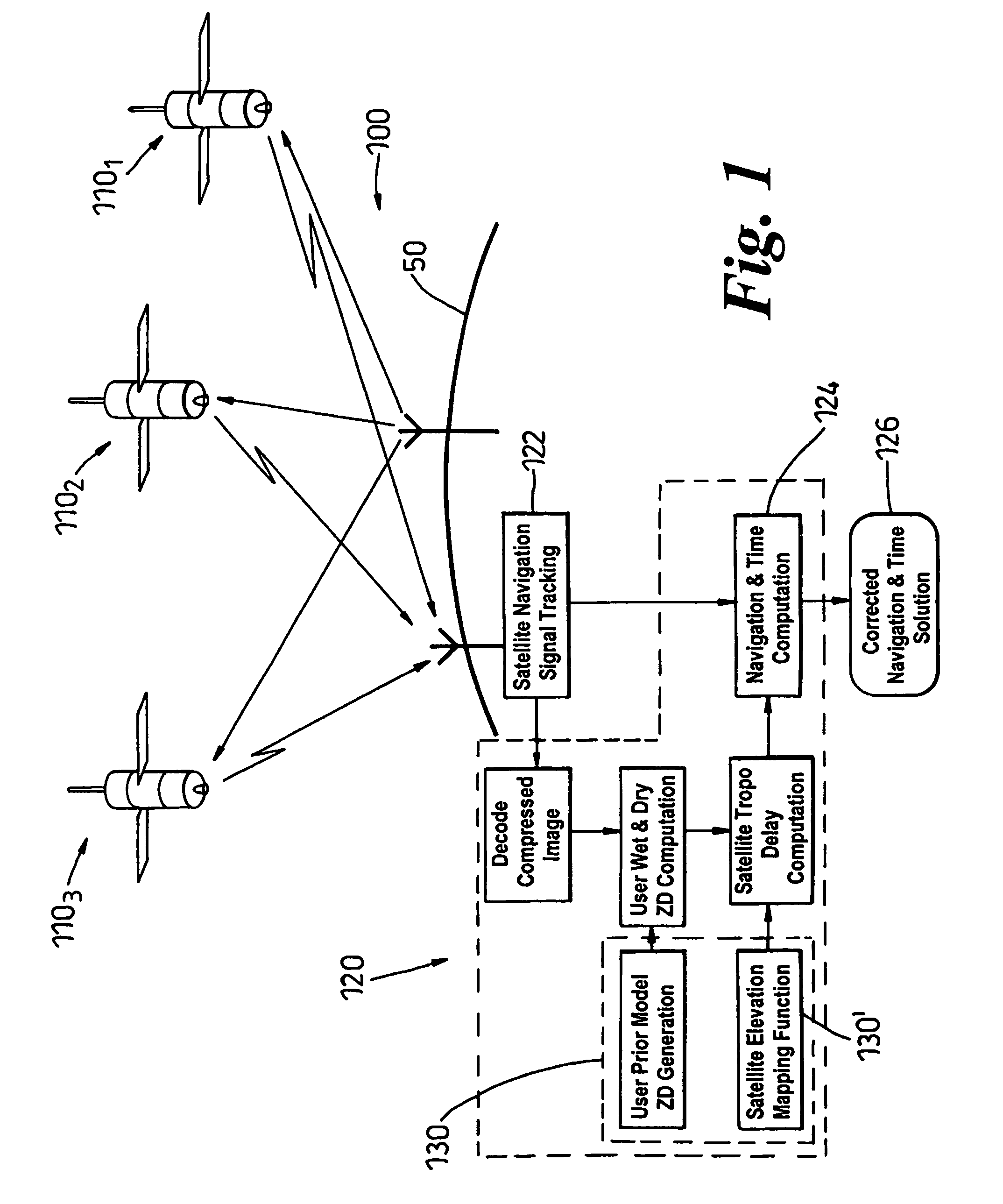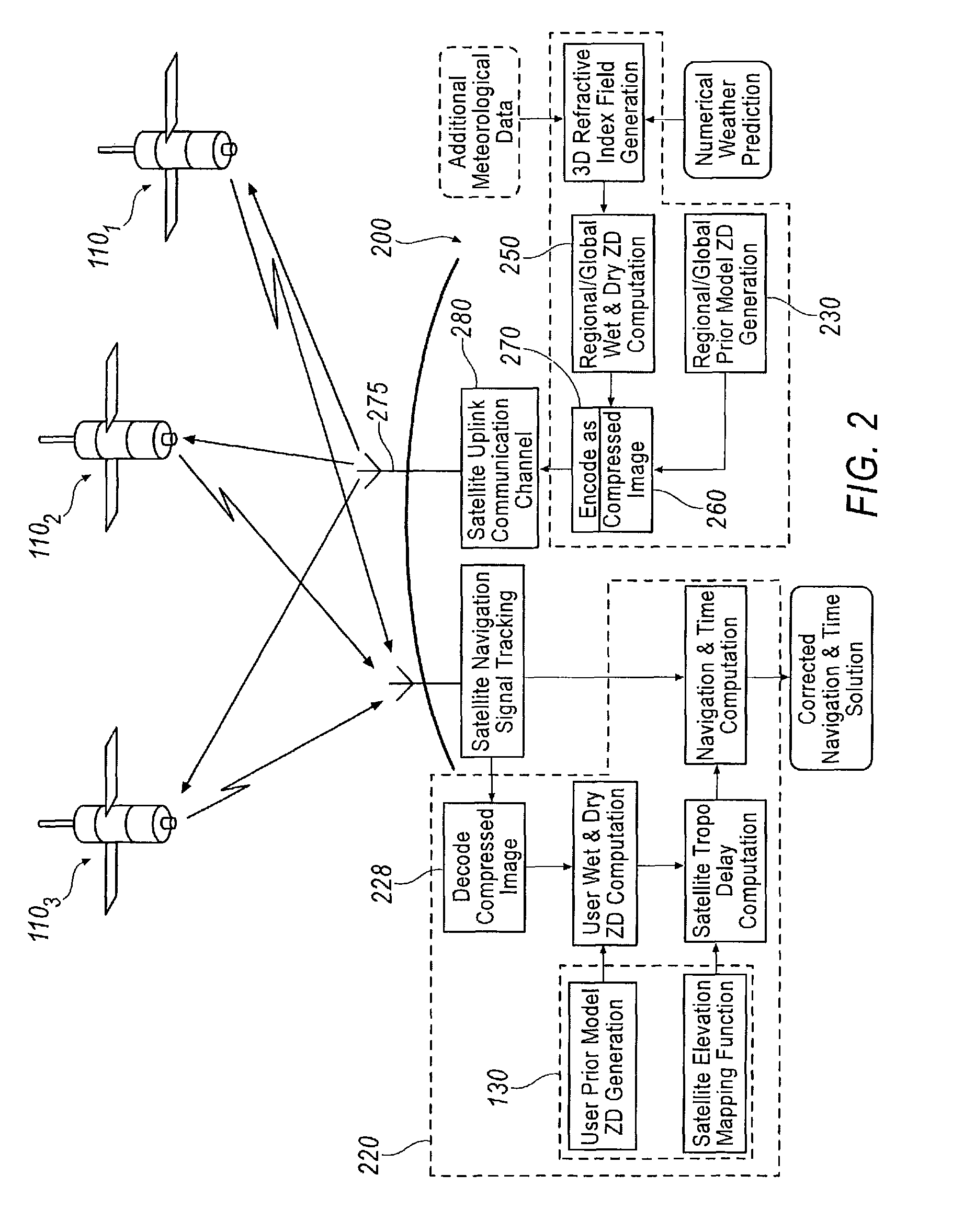Correction of troposphere induced errors in global positioning systems
a global positioning system and troposphere technology, applied in the field of global positioning system correction of troposphere induced errors, can solve the problems of inability to accurately model, difficulty in simple modeling of tropospheric delays, and cost in computation and time taken to determine the location
- Summary
- Abstract
- Description
- Claims
- Application Information
AI Technical Summary
Benefits of technology
Problems solved by technology
Method used
Image
Examples
Embodiment Construction
[0058]Referring to FIG. 1 this represents in schematic form a section of the earths surface 50 and in relation thereto a global positioning system 100 comprising a plurality of GNSS satellites 1101, 1102, 1103, . . . in earth orbit and a user 120, in the form of a signal receiver and processor of hand-held or vehicle-mounted type at or above the earth's surface.
[0059]The user receiver 120 comprises, in conventional manner, a front end receiver 122 of signals transmitted from the various satellites within view at radio frequency frequencies, processing means 124 and information display or like delivery apparatus 126. The processing means includes a digital processor that responds to received signals from, and characteristic of, the various satellites whose orbital positions are known with respect to points on the earth and computes from the variations in reception of these signals a solution comprising the position of the user receiver in two- or three-dimensions, and, importantly in...
PUM
 Login to View More
Login to View More Abstract
Description
Claims
Application Information
 Login to View More
Login to View More - R&D
- Intellectual Property
- Life Sciences
- Materials
- Tech Scout
- Unparalleled Data Quality
- Higher Quality Content
- 60% Fewer Hallucinations
Browse by: Latest US Patents, China's latest patents, Technical Efficacy Thesaurus, Application Domain, Technology Topic, Popular Technical Reports.
© 2025 PatSnap. All rights reserved.Legal|Privacy policy|Modern Slavery Act Transparency Statement|Sitemap|About US| Contact US: help@patsnap.com



